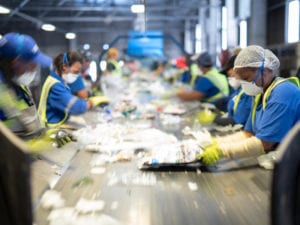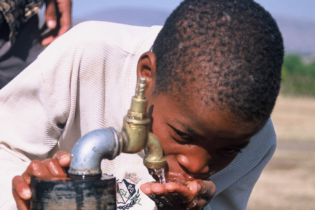The holiday season is here and while many of us are starting our holiday shopping, wrapping gifts for family and friends or finalising our travel plans, the waste sector is preparing for an increase in the amount of both waste and recycling material.
South Africa alone produces approximately 95 million tonnes of waste per year, of which less than 40% is recycled. In an industry currently worth over R25 billion – local businesses, homeowners and the general public can help to not only demonstrate corporate social responsibility but also assist with giving back to an already struggling economy. In addition to generating income, for example creation of jobs, recycling also saves money by reducing on fees spent at landfills, which charge tipping fees and require significant amounts of land. “Although the necessity to recycle has been around for some time many are still not well informed about which items can be reused and understand the different waste streams that are created,” says Joey Barnard, operation manager at waste management company Averda. There is also a lack of understanding amongst the general public on recycling correctly and how they could be assisting around 300 recycling companies which vary in the size and scope of the facilities they operate. The recyclability of an item, Barnard further explains, is dependent on its ability to reacquire the properties it had in its original state before it entered the process of recycling. “Even though we receive materials from residents and commercial enterprises at a number of specialised facilities that use a combination of equipment and manual labour to sort and densify materials, we still require the assistance of all waste generators,” says Barnard. Averda has two ‘Materials Recovery Facilities’ (MRF) that operate from 07h00 till 23h00 in two shifts. At the Cape Town facility Barnard overseas 46 employees who all come from local communities. The site receives on average 700 tonnes of waste a month, from this 80% is recovered and prepared for shipment downstream to recyclers. The role of these facilities is to sort as much waste as possible and reduce the amount of waste that goes to landfill sites. More waste ending up at landfills means more methane and carbon dioxide released into the air, resulting in higher temperatures and a likelihood of natural disasters globally.So, the big question is ‘how can businesses and the public help these MRF’s in the long run?’
Both sectors need to dispose their waste correctly so that more can be recycled and less is discarded. For example, items such as bubble wrap, holiday ribbons and bows, cellophane and foam packaging cannot be recycled at MRF’s but can be reused or repurposed at home and in business spaces. Cardboard packaging that contains plastic can only be recycled once it has been separated, if not they pose a potential hazard to the recycling equipment and an increased health risk to employees. “We have seen some interesting items come through on our conveyor belt from used needles, medical waste, disposable nappies to dead pets and live snakes,” adds Barnard. He also advised that cigarette butts are not recyclable and food containers need to be cleaned out before they are placed in one’s recycling bin. “We all need to take waste prevention into consideration, with an emphasises on avoiding and reducing waste before substances, materials and products are discarded.” Barnard says all South Africans must start engaging in responsible waste disposal and management practices. “We are optimistic that MRFs are already receiving great support from local businesses, residential estates and municipal authorities around South Africa, but we believe more can be done. The benefits to the environment and to the economy are many, and this can be further amplified if more industry players make use of MRFs.”







